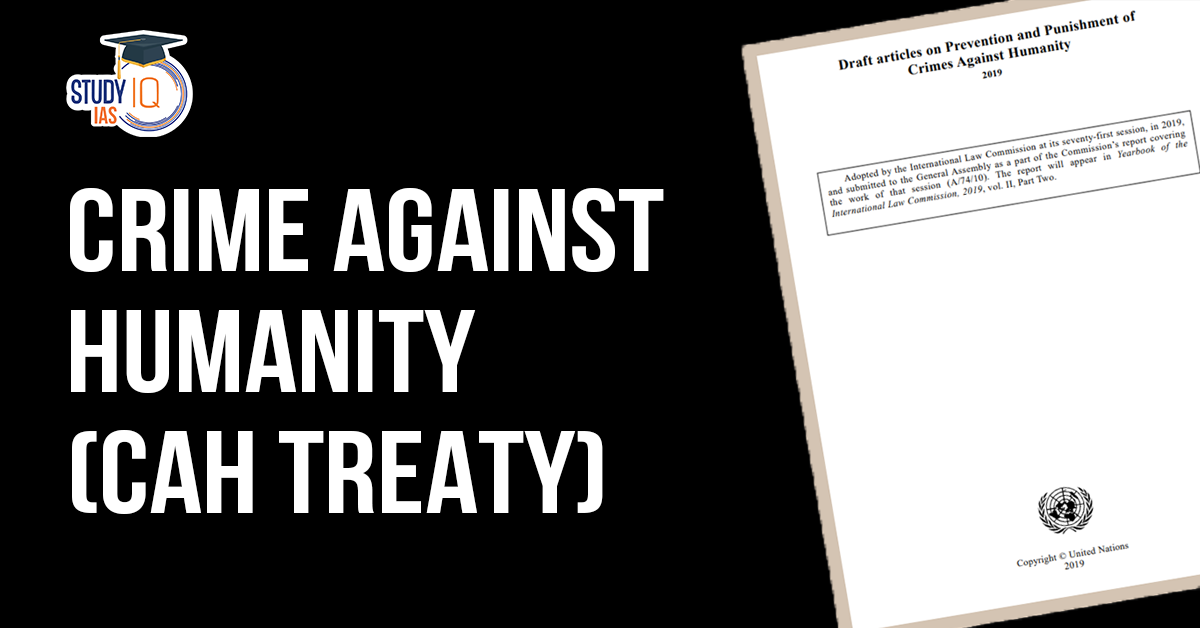Table of Contents
Crime Against Humanity Background
CAH was first codified in the 1945 London Charter, which established the Nuremberg Tribunal to prosecute atrocities committed during World War II. Further addressed in the statutes of the International Criminal Tribunals for the former Yugoslavia and Rwanda.
- Since the 1990s, CAH have been codified in different international treaties such as:
- The Statute of the International Criminal Tribunal for the former Yugoslavia (1993),
- The Statute of the International Tribunal for Rwanda (1994), and
- The Rome Statute of the International Criminal Court (1998).
- Adjudication of Crimes Against Humanity (CAH):
- Unlike genocide and war crimes, crimes against humanity aren’t officially codified in an international treaty but are still adjudicated in the International Criminal Court (ICC) and other global bodies.
- Although crimes against humanity are tried at the ICC, the court doesn’t have the power to arrest suspects.
Origin of the Term
Its origin goes back to the late 18th and early 19th century, when it was used in the context of slavery and the slave trade, and to describe atrocities associated with European colonialism in Africa and elsewhere.
Reasons for a Dedicated CAH Treaty
- Jurisdictional Limitations: The ICC’s jurisdiction covers only member states, limiting action in non-member states.
- State Accountability: Unlike the Rome Statute, a CAH treaty could hold states accountable for failing to prevent CAH, similar to the Genocide Convention.
- Example: The Gambia filed a case against Myanmar at the ICJ under the Genocide Convention for violations against the Rohingya population.
- Expanded Scope: Potential to include new acts like:
- Starvation of civilian populations.
- Gender apartheid and forced pregnancy.
- Use of nuclear weapons and terrorism.
- Exploitation of natural resources and crimes against indigenous populations.
Gap in Accountability for Crimes Against Humanity (CAH)
Limited Governance Framework: Unlike genocide (governed by the Genocide Convention, 1948) and war crimes (covered by the Geneva Conventions, 1949), CAH lack a dedicated treaty.
- Currently, CAH are addressed only under the Rome Statute of the International Criminal Court (ICC).
- The Rome Statute defines CAH as acts like murder, extermination, enslavement, deportation, torture, imprisonment, and rape when committed as part of a widespread or systematic attack directed against civilians with knowledge of the attack.
| War Crimes | Genocide |
|
|
India’s Position on the CAH Treaty
- Non-Party Status: India is not a party to the Rome Statute and has raised concerns about ICC jurisdiction over issues like prosecutorial powers and the exclusion of nuclear weapon use from war crimes definitions.
- Definition of CAH: India argues that only crimes committed during armed conflicts should qualify as CAH and opposes including enforced disappearance as a crime under this framework.
- Instead, it advocates for terrorism to be recognized as a CAH.
- Lack of Domestic Legislation: India has no specific domestic laws addressing international crimes like CAH or genocide.
- Judicial Observation (2018): Justice S. Muralidhar (Delhi High Court) in State vs Sajjan Kumar highlighted the absence of such laws as a significant gap.
- Recent amendments to Indian criminal laws failed to incorporate CAH and genocide.
Reasons for India’s reluctance to actively participate in the negotiation process on a separate Convention on CAH
- Negotiations at ILC seeks to adopt the same definition of CAH as provided in the Rome Statute. India is not in favour of using ‘widespread or systematic’ as one of the conditions, but prefers ‘widespread and systematic’, which would require a higher threshold of proof.
- Second, India wanted a distinction to be made between international and internal armed conflicts. This was probably because its internal conflicts with Naxals and other non-state actors in places like Kashmir and the Northeast could fall under the scope of CAH.
- The third objection related to the inclusion of the enforced disappearance of persons under CAH. India is of the view that it has signed but not yet ratified the UN International Convention for the Protection of All Persons from Enforced Disappearances, therefore, it is under no obligation to criminalize it through domestic legislation.
India’s Potential Role
- Incorporating CAH in domestic law aligns with India’s emphasis on territorial jurisdiction.
- Leading global efforts against impunity for human rights violations would reinforce India’s aspiration to be a ‘Vishwaguru.’
| Geneva Conventions (1949) |
|


 Iran Nuclear Crisis and India’s Role f...
Iran Nuclear Crisis and India’s Role f...
 H1B Visa Program, Beneficiaries, Eligibi...
H1B Visa Program, Beneficiaries, Eligibi...
 Comparison Between India & France's ...
Comparison Between India & France's ...

























